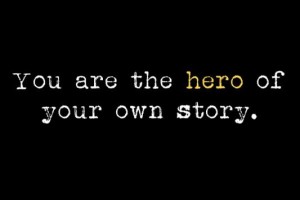Over the past four months, I have been dialoging with members of the Church of Jesus Christ of Latter Day Saints, otherwise known as Mormons, or LDS. This isn’t my first time (or fourth time, for that matter) but it’s been the best and most rewarding of all my interactions. It’s the first time I have adequately stopped treating them like strangers to be gunned down with knowledge; to quit using them for an intellectual high that serves to dull the sting of my own faith questions, and personal insecurities. Paul the apostle eloquently states the very lesson I am learning: “If I . . . can fathom all mysteries and all knowledge, and if I have a faith that can move mountains, but have not love, I am nothing.” (1 Cor. 13:2)
C.S. Lewis said, “To love at all is to be vulnerable. Love anything and your heart will be wrung and possibly broken. If you want to make sure of keeping it intact you must give it to no one, not even an animal. Wrap it carefully round with hobbies and little luxuries; avoid all entanglements. Lock it up safe in the casket or coffin of your selfishness. But in that casket, safe, dark, motionless, airless, it will change. It will not be broken; it will become unbreakable, impenetrable, irredeemable. To love is to be vulnerable.”
One or two days a week, I’ve welcomed Mormon missionaries into my home to discuss the truth they claim has been revealed in these latter days—the restoration of the true church of Jesus Christ and the bringing forth of the full gospel revealed by the gift and power of God through the prophet Joseph Smith. I’ve attended five ward services (and counting) and have had Mormon missionaries over for breakfast and lunch.
No zingers meant to tear the person down or belittle their faith. No hiding behind a wall of feigned superiority. No questions like: “Do you really believe Satan is Jesus’ brother!?” (I have to say, even in my first encounters with LDS, I never stooped that low or carried that tone). And no diving straight into historical gotcha-points (aka: early Mormon history) on the first meeting, as if your more eager to fight them then to friend them.
Don’t misunderstand me; there is a place for tactful challenges that may, in fact, feel like zingers. And there’s a time and a place for being lovingly direct about what you see is a real theological or historical problem . . . like with that LDS missionary whom you’ve established a genuine relationship with. But if it’s anything like a fellow human coming to your door for the first time, more than willing—yea, wanting!—to spend time talking about the most important topics of life, what room is there for zinging them just because you don’t have time to invite them in and sincerely listen and have a constructive exchange with them. What kind of schedule can’t be squeezed for an hour here and there a week to invest long-term in such a persons life? Are we followers of Jesus, or Christians incognito?
Perhaps I’m being too insensitive to the demands of our busy, modern, Western, Christian life. Pray a prayer, you’re saved! See you next week maybe? Or, knock-knock-knock, creek, “You guys don’t really believe Satan is Jesus’ brother!? Do you?” Snort at the answers that weren’t really heard. Stare incredulously. SLAM.
There is something, dare I say, wholesome, about shunning the punch to the glass jaw, put ‘em in an arm-bar approach to evangelism. We all know, in our heart, it is about relationship. About really, genuinely, caring about another person and simultaneously letting down our own defenses. It’s intimate. A friendship can actually form. One becomes more keenly aware of similarities, not just differences. If the truth, coupled with love, is the goal at the center of a discussion between two worldviews, (or two religious claims), then it will be far more natural for the one further from truth to move toward the one closer to it.
The more real you are with others, the more real they are with you, and the walls constructed to protect pride and fear and insecurity begin to erode. When fear is surpassed, oh how much easier it is to consider a course correction.





3 Comments
Leave your reply.